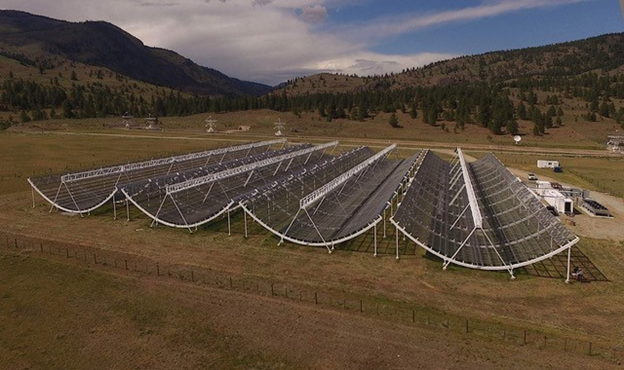P&A Colloquium – Dr. Juan Mena-Parra, University of Toronto and Dunlap Institute for Astronomy and Astrophysics
Apr 3, 2024
3:30PM to 4:30PM
1280 Main St. West, ABB 102, Hamilton, Canada

Date/Time
Date(s) - 03/04/2024
3:30 pm - 4:30 pm
Location
Physics and Astronomy Department
ABB room 102
Dr. Juan Mena-Parra
Assistant Professor, University of Toronto and Dunlap Institute for Astronomy and Astrophysics
https://www.dunlap.utoronto.ca/dunlap-people/prof-juan-mena-parra/
Title: CHIME/FRB Outriggers and CHORD: new instruments for localization of fast radio bursts
Abstract:
Fast radio bursts (FRBs) are enigmatic millisecond-duration pulses of radio light observed out to cosmological distances. Both their origins and emission mechanisms remain unclear, making FRBs one of the most exciting new mysteries of astrophysics. The Canadian Hydrogen Intensity Mapping Experiment (CHIME) with its specialized real-time transient-search engine (CHIME/FRB) has emerged as the leading facility for detection of FRBs, increasing the known sample by an order of magnitude, and enabling detailed studies of their statistical properties. However, CHIME alone does not have the ability to precisely localize these bursts, which is crucial to understand their nature and unlock their potential as probes of the intergalactic medium and large-scale structure. CHIME/FRB Outriggers will be a dedicated very-long-baseline interferometry (VLBI) instrument consisting of outrigger telescopes at continental baselines, working in tandem with CHIME/FRB to pinpoint FRB locations with the precision required to identify their environments within host galaxies. Currently undergoing commissioning, CHIME/FRB Outriggers represents the first phase of the Canadian Hydrogen Observatory and Radio-transient Detector (CHORD), a next-generation radio telescope that will complement CHIME and the outriggers with large arrays of ultra-wideband low-noise telescope stations to detect an order magnitude more FRBs and cover a much wider frequency band. In this talk I will introduce the CHIME/FRB Outriggers and CHORD programs, discuss their science goals and challenges, and report on the current status.
